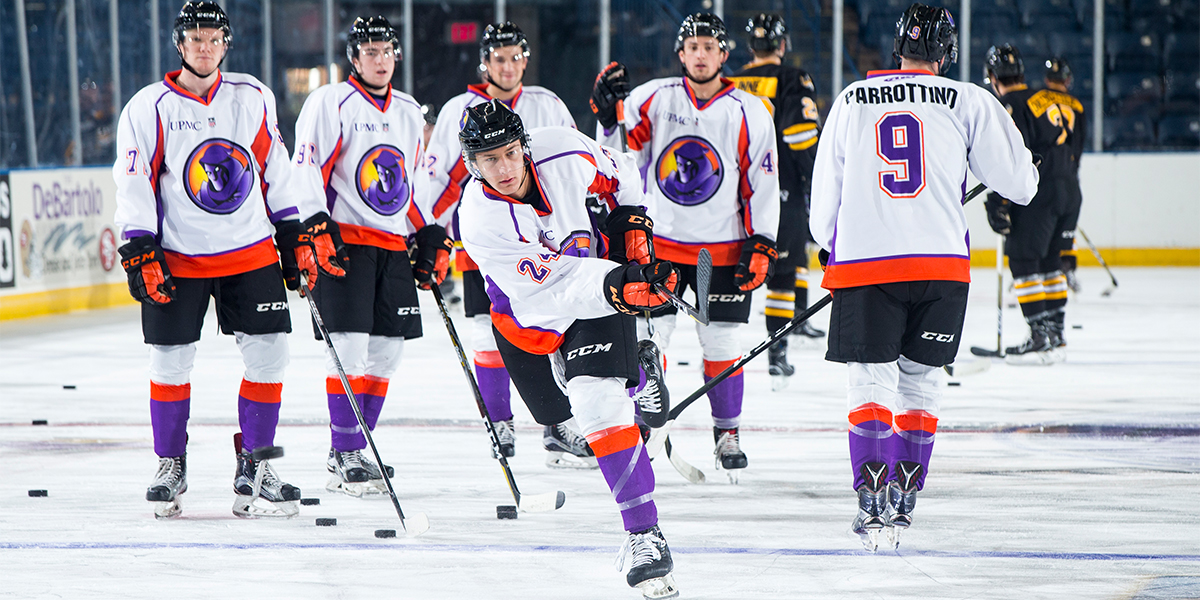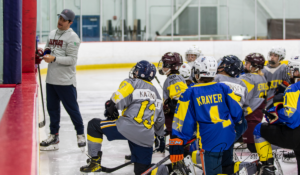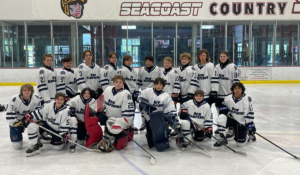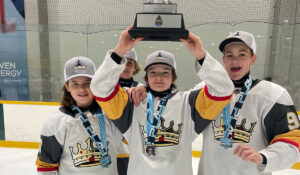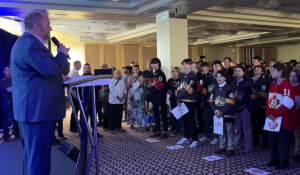Insights and perspective on player advancement in youth hockey, and how to stand out from the rest.
Ryan Kosecki spends his days helping players advance to the highest levels of amateur hockey.
If you see him at a rink, he will be wearing one or more of his many hats. Kosecki is a co-general manager and vice president of hockey operations for the United States Hockey League (USHL) Youngstown Phantoms. He is the assistant general manager and scout for the North American Hockey League (NAHL) Maryland Black Bears. He is the head coach of the Fox Motors 15U team in Grand Rapids, Mich. Oh yeah, and when he’s not busy with any of those hockey-related responsibilities, he’s also coaching his son’s 10U team.
It is quite the hockey job list, and it makes Kosecki — previously an assistant coach with the USHL’s Muskegon Lumberjacks — a unique source for sharing knowledge on what it takes for athletes to make it to the next level.
So if he shows up to your game, how do you catch Kosecki’s eye? What does he look for in a player when he’s scouting for the Phantoms or the Black Bears? Kosecki said it’s four things, in this order:
- How the player thinks the game
- His compete factor
- His skill
- His skating
If those don’t pass the eyeball test, he’s moving on to the next player on the bench.
“I want to see how they make plays, how their stick is, whether they have a good stick or not, do they make their teammates better, are they able to beat a guy one-on-one, stuff like that, because you have to be able to make players around you better,” Kosecki said. “Most of the game is played without the puck, so are you able to make that five-foot slip pass? Are you able to puck protect and fend off that defender to be able to get that shot on net? Are you hard on as F1 on the forecheck? How do you play in your own zone? Will you block shots? Will you go to the dirty areas in the offensive zone? Stuff like that.
“One thing I really, really, really look for is are you a good teammate. Once I’ve zoned in on a kid that I like, I look for things like how is he on the penalty kill, how is he on the power play, but then I’ll watch him on the bench, see how he acts, or reacts, I should say, after a loss, after a bad goal, after he misses a shot or doesn’t get a pass from a teammate. I’m watching body language, all that stuff, to see what kind of kid he is and what kind of teammate he is.”
It takes a lot more than just a strong performance on the ice for Kosecki to welcome players into either of his organizations, however. He will do his homework on a player, and that starts with having a conversation with the person who knows the player best — his coach.
“The first thing I’ll do is after the game I’ll talk to the coach, and literally the first question I ask the coach is ‘what kind of kid is he?'” said Kosecki. “Obviously, if you’re not a great kid and a great teammate, I want nothing to do with you and I don’t care how good you are. The next thing, we’ll talk about grades, and the third one is how hard does he work? Does he work hard in the weight room, is he a kid that cares about hockey or is he just a kid who shows up? Is he one of the kids that wants to do video, wants to study analytics, wants to work hard in the weight room and will do whatever it takes to get to the next level?”
And grades are more important than just maintaining eligibility. To Kosecki, a player’s performance in the classroom shows a great deal about his character and his determination for having success in hockey.
“Yeah absolutely, it shows what type of kid he is and whether he’s serious about his hockey career,” Kosecki said. “If he doesn’t have good grades, he’s not going to be able to get into college and play college hockey, and that’s why we’re recruiting these kids, it’s so they can play college hockey.”
When asked what he would tell a kid who approached him in a rink lobby asking for advice, Kosecki highlighted his most important points, because there would be many.
“Oh wow, I could go on for hours about that,” Kosecki said. “There are so many different factors. The number-one thing I tell every kid is stop feeling like you have to score to impress scouts or be the leading scorer to impress scouts. Even as a coach, I’ve never had a scout ask me how many points a kid has. Scouts already decided if they like the kid. I’m the same way, I’ve never asked a coach how many points a kid has, I already decided whether I like that kid or not. Be one of those kids who can play all three positions as a forward, be the kid who’s willing to play both defensive spots.”
He also said to not sweat it if you’re not getting power-play time.
“You don’t have to be one of the kids on the power play. For some reason…we’ve become a generation who, if you ask 100 parents, 99 of them would say they would rather have their kid on power play than the PK, and it’s the stupidest thing ever. If you want to make it to the next level, you have to be a kid who…unless you’re the best of the best, you’re a kid who’s going to need to be able to play in all three zones, all three positions, be on the power play or the PK, be able to know different systems.
“The kid who can step in and say, ‘yeah, I can play right wing in a 1-2-2 or I can go out there and penalty kill,’ – those are the kids who are going to make it. That’s why a lot of times the most skilled player doesn’t make it. it’s the kid who’s going to work the hardest and the kid who is the smartest hockey player.”
And finally, Kosecki illustrates the value in watching a lot of hockey — your own, as well as higher levels of play.
“The other thing I would say is study the game. With social media and everything, [young athletes] don’t watch a lot of hockey. So if you’re not going to watch a lot of hockey, you better do a ton of video then, so that you’re learning the game. There is no better way to learn the game than watching your own video and having a coach break down your video and teach you the things you’re doing good and the things you’re doing bad.”
Want more from next-level scouts and how young athletes can elevate their games to junior hockey and beyond? Follow World Hockey Hub on Instagram, TikTok, YouTube, Twitter and Facebook.
More From The World Hockey Hub
- Top Prospects from five birth years set for Sixty Hockey Camp
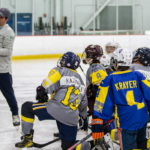 More than 300 youth players set for New England’s premier development camp
More than 300 youth players set for New England’s premier development camp - New Hampshire Continues to Build Resume in New England
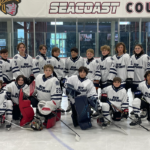 Four states compete for New England hockey bragging rights
Four states compete for New England hockey bragging rights - Incredible Offenses on Display at World Youth Championships
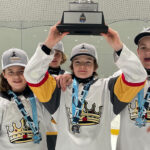 Bobby Spang, Brody Antignani, Oliver Ozogany put up huge numbers at tournament
Bobby Spang, Brody Antignani, Oliver Ozogany put up huge numbers at tournament - WYC Check In: Max Prudovsky Putting Up the Points
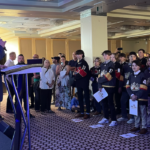 ‘11 forward leads tournament in points, goals heading into playoff round
‘11 forward leads tournament in points, goals heading into playoff round
New England States Rivalry Challenge
Find Out More!
